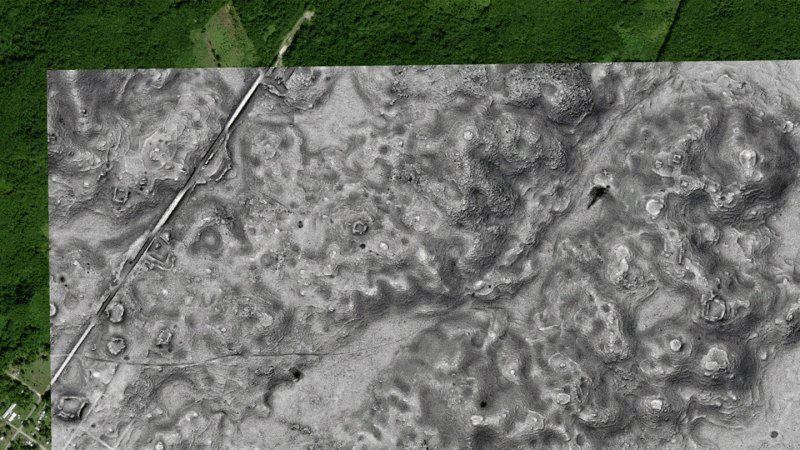
A massive Mayan landscape is hidden beneath a forested area of southern Mexico.
The newly discovered city, called Valeriana, spans an area roughly the size of Beijing and has “all the hallmarks of a classic Mayan political capital,” researchers reported in October. Antiquity. Its plazas connected by a grand causeway, temple pyramids and water reservoir may have impressed the Mayans over 1,500 years ago.
Archaeologists have long known that the Maya Lowlands, in the southernmost region of Mexico, harbor ancient urban environments (SN: 25.10.21). When archaeologist Luke Auld-Thomas, of Tulane University in New Orleans, was looking at random data online, he came across a dataset that the Nature Conservancy Mexico (TNC Mexico) was using to study carbon uptake and emissions in that region. . He saw that the organization was looking for a site with high archaeological potential and had a hunch that there might be structures there.
Further analysis showed that the bias was correct. Auld-Thomas “hit the bull blindfolded,” says Tulane anthropologist Marcello Canuto. “We didn’t expect to find such a large site with such a small dataset.”
TNC Mexico’s environmental analysis had used a technology called lidar to estimate tree heights and canopy volumes in the southern tip of Mexico. With lidar, researchers use laser beams from aircraft to map undulations in a landscape. It has been used to uncover many archaeological sites such as the high-altitude cities of the Silk Road, a massive ancient urban complex in Ecuador, and long-forgotten urban sprawl in the Amazon.SN: 23.10.24; SN: 1/11/24; SN: 25/5/22).
While the lidar beams that reached the forest floor were of little use for TNC Mexico’s focus on tree cover, they provided good data for Auld-Thomas and his colleagues to create a topographic map for archaeological purposes.
Reprocessing of these data indicated that Valeriana, located in the much larger Lowlands subdivision of the Maya region, may have been quite densely settled. The residents, who live in many houses surrounded by curved, amphitheater-like residential courtyards, may have enjoyed their time in the nearby lagoon, the researchers surmise, or on the city’s ball court, if not for the pyramid temples. who participated in rituals.
With over 400 structures per square kilometer, Valeriana had, at its peak, a building density more than seven times that of most of the surrounding region. Only the massive lowland city of Calakmul, near the current Mexico-Guatemala border, was historically denser, with about 770 buildings per square kilometer.
“It’s great to put the numbers to the suspicion we had that this might be one of the most densely populated ancient Mayan sites in the area,” says David Stuart, an anthropologist at the University of Texas at Austin, who was not included in the new study.
The discovery isn’t just about a site that no one knew about before, says Stuart. “It’s about the nature of how the Mayans settled into their landscape.”
Driving around that region, he says, it’s possible to see the mounds and pyramids that make up the landscape of now agricultural fields and “ancient agricultural terraces [that were] a breadbasket of agricultural activity in ancient times.” The study adds more evidence that the Maya Lowlands were, indeed, densely populated beyond Calakmul, which flourished during the Classic Maya period (AD 250-900) and may have had a population of over 50,000. “And the fact that we found this with environmental data shows that previous archaeological research suggesting this density was not an overestimate,” says Stuart.
Archaeologist Thomas Garrison, also at the University of Texas, agrees. He believes that lidar technology is helping his field make great strides. “This study shows the value that lidar data can have for archeology even when it is taken for other purposes,” he says. Lidar data from regions that are not widely known are helping archaeologists get a clearer and more indisputable picture of the pieces in the puzzle of Maya civilization. But lidar data is not everything. “The next step would be to visit and excavate these settlements to better understand them.”
#large #ancient #Mayan #city #southern #Mexico
Image Source : www.sciencenews.org